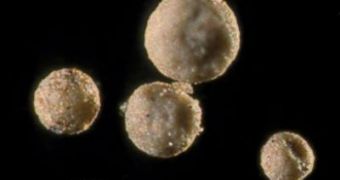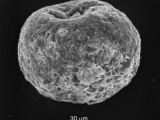The lack of rain on Saharan soil has been linked to the presence of two newly-discovered iberulites in the atmosphere above the desert. The two types of microscopic dust specs tend to bind to the water in the air and cause little humidity, as well as little chances for heavy rain over the desert. The particles are emitted upwards in bursts from the huge desert and its surrounding areas.
José Luis Díaz Hernández and Jesús Párraga Martínez, two of the researchers who discovered the iberulites, said that the tiny bits of rock come from certain types of minerals in the soil. Once they are airborne, they "hook up" with small water vapors, grounding them and preventing significant amounts of rain from falling over the sand. Some say that the desert was formed largely through this process and that the entire cycle is a vicious circle of sorts. All attempts to implement irrigation methods in the Sahara region on a large scale have failed and currently there are only a few oases were agriculture can be practiced.
The ironic thing about iberulites is that, while they keep Sahara dry, they also travel very long distances, carried away by air drafts. They reach as far as Florida and the Amazon in the west, the Himalayas in the east and the Scandinavian Peninsula in the north. Due to various complex chemical processes they undergo when they are in the atmosphere, the iberulites fertilize the soil wherever they land and also contribute to the development of plankton in seas and oceans around their area of influence.
Published in the "Geochimica et Cosmochimica Acta" journal, the new discovery, which has taken the Spanish researchers at the Department of Edaphology and Farming Chemistry of the University of Granada more than 6 years to come across, opens up new ways for environmental scientists to analyze the climate changes our planet currently undergoes. The study also confirmed suspicions of water and dust particles creating small vortexes in the atmosphere. Such conditions were only theorized and confirmed in lab experiments, but now scientists worldwide have a tangible particle to study upon.

 14 DAY TRIAL //
14 DAY TRIAL // 
